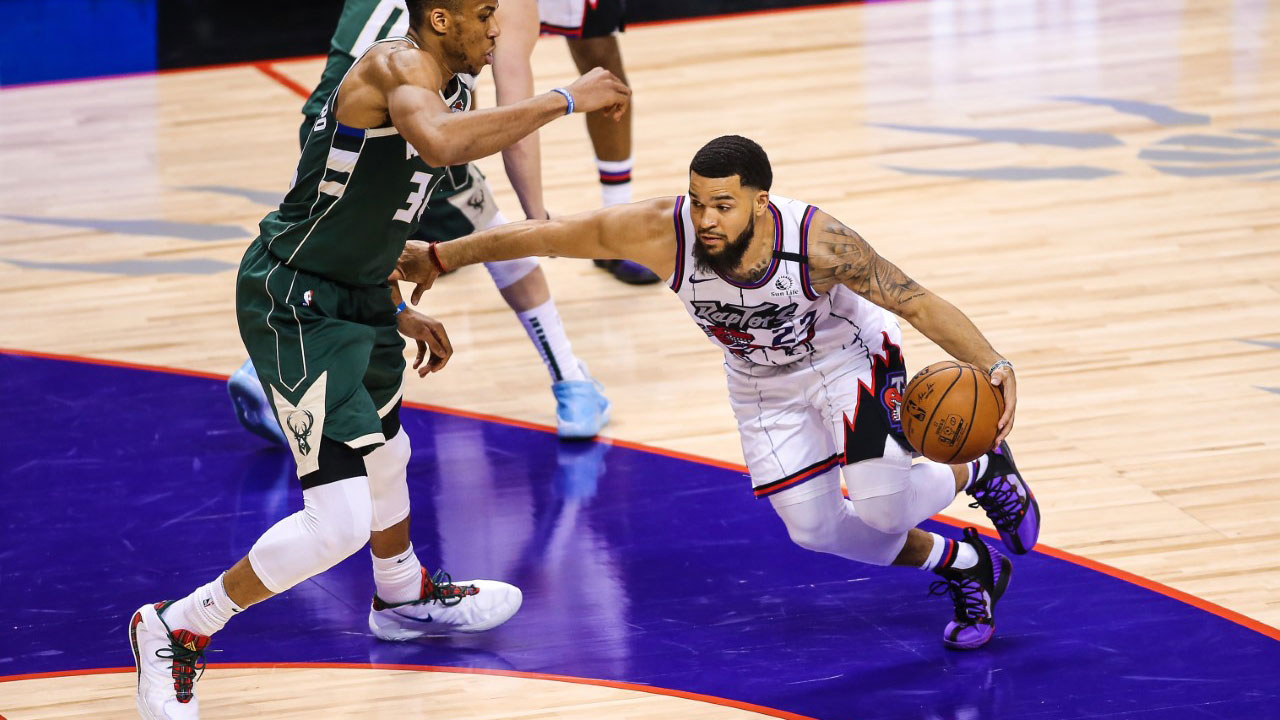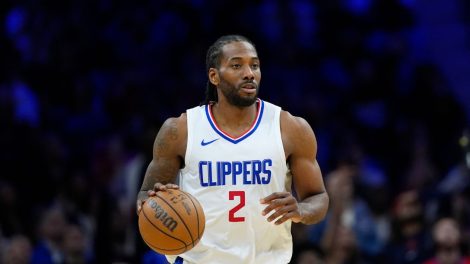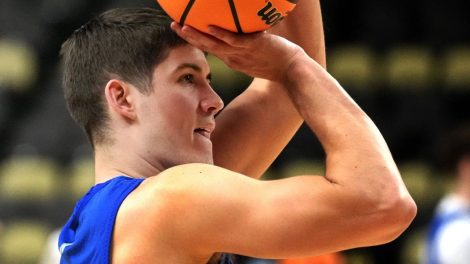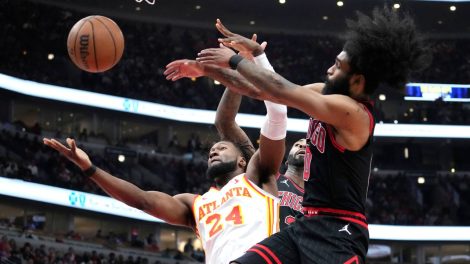Leave it to Fred VanVleet to say out loud what everyone else is thinking.
How concerned is he about the NBA convening in Florida to restart their season?
“Pretty concerned. It sounded good a month or two ago, not so much right before we got ready to leave,” the straight-shooting Toronto Raptors point guard said on a conference call recently.
When the notion that the league was going to try to construct an infection-free ‘bubble’ where the 2019-20 regular season could start first began to surface back April and gained momentum in May, there was a wishful belief that things would get better, that time was on their side.
The league’s effort to return to play would be guided by “the data, not the date” — the catchphrase NBA commissioner Adam Silver helped introduce into the lexicon only to see his best intentions steamrolled.
The date is here.
The Raptors will take a bus into the Wide World of Sports Complex at the Walt Disney World Resort on Thursday, as part of the last wave of 22 teams to step into the bubble. Barring something unforeseen they will remain there until they either win the title – which would take them into the second week of October – or until they get eliminated from competition.
And the data? It sucks.
[snippet id=4725691]
The NBA’s bubble was envisioned as offering an added layer of protection for all involved as the pandemic was hopefully in retreat or, at least, on pause before a second wave that most hoped wouldn’t rise up until the fall.
Instead case rates are skyrocketing across the United States at an almost exponential rate, with Florida being one the states where it is spreading fastest.
It took a little more than three months for the U.S. to hit one million cases on April 28, but it took roughly half that time — 44 days — to get to two million on June 11. It has taken just 26 days to reach three million — a quarter of the world total — as of Wednesday. At that rate, absent more aggressive measures to slow the spread, the country is two weeks from four million cases and could mark five million by the time the NBA regular season is scheduled to resume on July 30.
This was not part of the plan.
Rather than subjecting players and staff to undue risk by trying to return to play at all, the NBA may be rescuing them from stormy seas. The bubble may be the safest place in the U.S. at the moment and the NBA’s plan may be the most robust that any of the major sports trying to return to play has come up with.
The 37-member travelling parties that teams are allowed to take into the bubble — up to 17 players along with coaches, support staff and executives — have been getting tested regularly since teams began congregating in their home markets on June 23.
That was planned so that those with the virus should be clear of it before arriving in Orlando. As an added measure when the Raptors arrive at Disney World Thursday, the first thing they’ll have to do is isolate in their rooms for 36 hours, leaving only to be tested, with pre-packaged meals being brought to their doors.
Only after receiving two negative tests inside the bubble will they be able to leave their rooms and begin practicing and enjoy what amounts to a luxurious summer camp set up by the league, complete with live entertainment, games areas, golf and spas.
The Raptors have been following a similar format in a hotel in Naples Fla., where the team assembled rather than have to deal with border issues in Toronto. While a relatively small fraction of NBA players and staff tested positive in the lead-up to Disney World, there have been some concerning signs. The Brooklyn Nets have had five players test positive and six other teams had to close their home practice facilities due to positive tests so far.
[snippet id=3360195]
But the Raptors sailed on through, building their confidence that the larger scale NBA plan could work.
“Let’s not get over-confident but let’s say [I feel] slightly more confident [about the bubble plan],” said Raptors head coach Nick Nurse. “Me, it feels like we are in a safe environment. I mean we are going a long ways out of our way to make it extra safe as we should. I think that contributes to it.
“We really are in the hotel. We are confined. We are away from everything. There is cleaning all over the place. Everyone is wearing masks. We go to the gym and there’s cleaning and we come back. It feels really safe. That’s good.
“I would imagine when we go in there the early stages or days of the Disney thing are critical… I think it will all be done at a really high level and remain fairly safe. I hope I’m right… You really don’t know but I would say I feel much more safe than maybe I thought I was going to, maybe.”
The amount of time the NBA has been able to build into their plan could prove to be the most significant element working in their favour.
While the MLS has tried to create their own bubble for their three-week return-to-play tournament, they haven’t had the same buffering in place with teams arriving from their home markets and expected to play just a few days later. The result is one team — Dallas FC — already being sent home after having 10 players and staff test positive. Another team, Nashville, could be in a similar situation. The league is already having to juggle schedules accordingly.
The NBA is hoping that they will have avoided having a team arrive with an outbreak in their midst by having them undergo two weeks of testing before they ever show up.
Moreover, the league is confident that they are well-positioned to stem any potential outbreak before it spreads. In a speech at Fortune Brainstorm Health — a conference comprised of corporate leaders, thinkers, inventors, entrepreneurs and health policy innovators — Silver suggested the league’s testing will include the ability to decipher the genetic variations between the viruses that do show up in testing and determine the source.
Since the virus is constantly mutating, the league will be able determine if infections are coming from varied sources, likely outside the bubble, or a single source — indicating it’s from within the bubble.
“Either scenario is bad,” says Andrew Morris, the medical director of the Antimicrobial Stewardship Program at the Sinai Health System in Toronto and a Harvard-trained epidemiologist. “But it lets you know what the problem is.”
[snippet id=4888368]
The ability to do what Morris deems a sophisticated level of analysis is more proof, he says, the NBA isn’t messing around.
It’s the kind of planning that builds a cautious confidence, which is about all anyone can hope for.
“I think for the most part I just put the trust in the organization and understand that I don’t think they would put us in extreme risk, and trust the NBA,” said VanVleet. “That’s where my trust lies right now. Hopefully they prove me right and not wrong and I understand that around the league there have been some positive tests and they are trying to get ahead of that now so that when we are actually in the bubble, hopefully everything will be OK.
“I’m trying to be optimistic about it. It’s not the most ideal situation but it’s kind of the times we are in. It hasn’t been an ideal for anyone.”
The billion-dollar question — which is roughly the amount of money that the league and the players are hoping to recoup by returning to play — is under what circumstances the plan might fall apart? What would it take to simply bail?
Early on in the process the NBA indicated they didn’t want to be seen putting an undue strain on the available testing resources. That could be a theme to watch as the pandemic spreads and testing shortages begin to creep up – a development that one infectious disease expert called “terrifying.”
And there could be the appearances of continuing to play games inside a luxury bubble as the virus surges, hospitals fill and players have to consider the well-being of their families at home.
That might be a tough sell on optics alone.
And there is the question of what to do if there is an outbreak within the bubble, bringing down a whole team or a major star or two, potentially threatening the competitive integrity of the entire undertaking, let alone players’ health. Already it’s apparent that the Brooklyn Nets – short nearly half their rotation – are going to be severely compromised, likely giving whoever draws them in the first round as close to bye as can be had.
Can the league afford a second team to basically get wiped out before they even start?
“Certainly if we had any sort of significant spread within our campus, we would be shut down again,” Silver told Brainstorm Health.
For good reason the NBA has never articulated what might trigger a major rethink of a program that they have invested a reported $150 million in getting right.
Better to say as little as possible and hope everything works out.
[relatedlinks]









